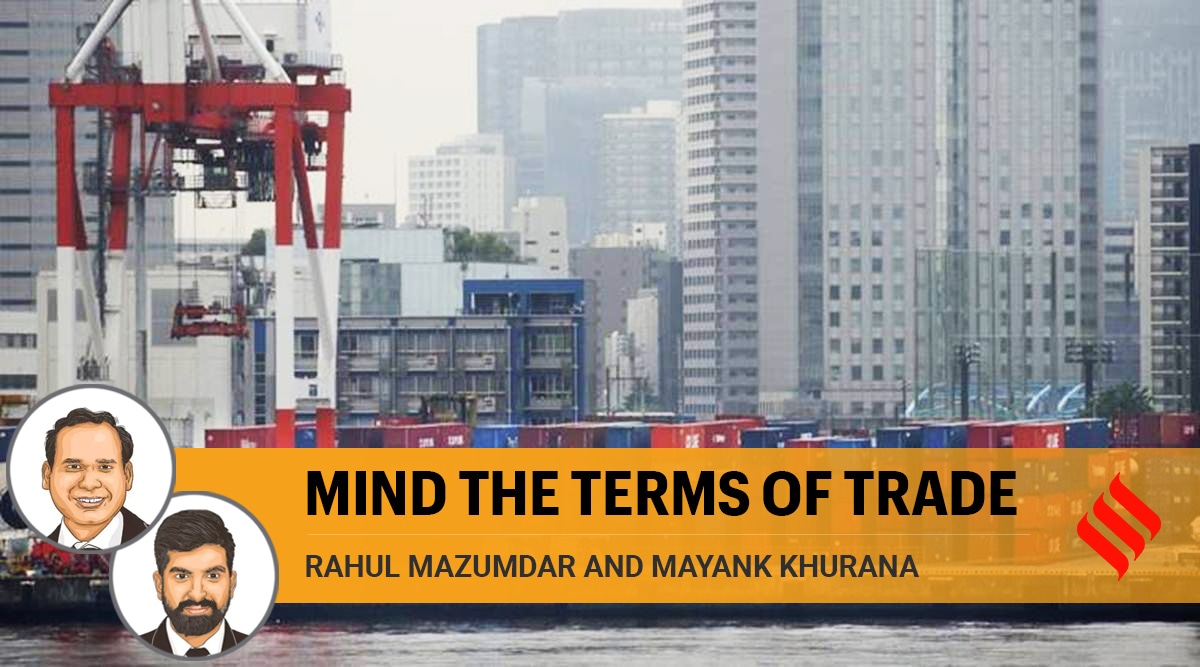 The India-UAE Comprehensive Economic Partnership Agreement sets a good example. It includes a strong clause on the rules of origin. Forty per cent value addition or substantial processing of up to 40 per cent in the exporting country is required to qualify for lower tariffs.
The India-UAE Comprehensive Economic Partnership Agreement sets a good example. It includes a strong clause on the rules of origin. Forty per cent value addition or substantial processing of up to 40 per cent in the exporting country is required to qualify for lower tariffs.In recent months, India has signed trade agreements with Australia and the UAE. In the last week of June, New Delhi began talks for a similar agreement with the EU. These talks could have a bearing on tariff-related matters in agriculture and industry. India’s successful sectors like textiles, pharmaceuticals and leather could benefit from these deliberations, which would also be keenly watched by representatives of the services and renewable energy sectors.
In the last decade, India’s exports to EU countries have grown at a faster pace than the country’s overall exports. The Netherlands, Germany, Belgium, Italy, and France have emerged as key markets for Indian products. A successful free trade agreement (FTA) with the EU could help India to expand its footfall in markets such as Poland, Portugal, Greece, the Czech Republic and Romania, where the country’s exports registered double-digit annual growth rates in the last decade.
Before entering into trade agreements, India needs to take care of a few key concerns. These agreements do provide momentum to cross-border trade flows by dismantling various tariff and non-tariff barriers. It has been observed that when India is an importer, the preferential tariffs that accrue as a result of trade agreements are significantly lower than the rates charged from countries given Most Favoured Nation (MFN) status by New Delhi. But when the partner country is the importer, preferential tariffs on Indian goods, in most cases, are closer to the MFN tariffs. As a result, Indian exporters do not get the same returns as their counterparts in the partner countries — India’s trade with South Korea is a case in point. Before entering into a trade agreement care should, therefore, be taken to ensure that the domestic industry is not made to compete on unequal terms with the partner countries.
The India-UAE Comprehensive Economic Partnership Agreement sets a good example. It includes a strong clause on the rules of origin. Forty per cent value addition or substantial processing of up to 40 per cent in the exporting country is required to qualify for lower tariffs. Rules of origin have been a bone of contention in most Indian trade agreements. In 2020, the country notified the Customs (Administration of Rules of Origin under Trade Agreements) Rules (CAROTAR, 2020), which require a basic level of due diligence from the importer. It will be interesting to see how these rules work out in the FTAs.
Subscriber Only Stories
“Offset clauses” — where the exporter is obliged to undertake activities that directly benefit the importing country’s economy — should be built into trade agreements, especially for technology intensive sectors. An emergency action plan could be another useful ingredient of trade agreements. In February 2020, the US made India ineligible for claims under GSP, America’s oldest preferential trade scheme. The US Trade Representative’s Office deemed India as a developed country and suspended beneficial treatment under the GSP. A contingency plan should be in place to tackle such situations.
India should also take a cue from the US-Mexico-Canada Agreement, to incorporate a “sunset” clause in trade agreements. The pact between the three North American nations provides for periodic reviews and the agreement is slated to end automatically in 16 years unless the countries renegotiate it.
Finally, India should negotiate for parity between services and merchandise. India’s trade in services is low, and its overall score in the OECD’s Services Trade Restrictiveness Index (STRI) exceeds the world average. It is especially high in legal and accounting services due to the licencing requirements in both these segments. There is also significant room for expansion of trade in the banking and financial services industry.
A well-crafted trade agreement could help India enhance its share in global trade and help attain the government’s target of making the country a $5-trillion economy.
Mazumdar and Khurana are economists with India Exim Bank. Views are personal
- The Indian Express website has been rated GREEN for its credibility and trustworthiness by Newsguard, a global service that rates news sources for their journalistic standards.

